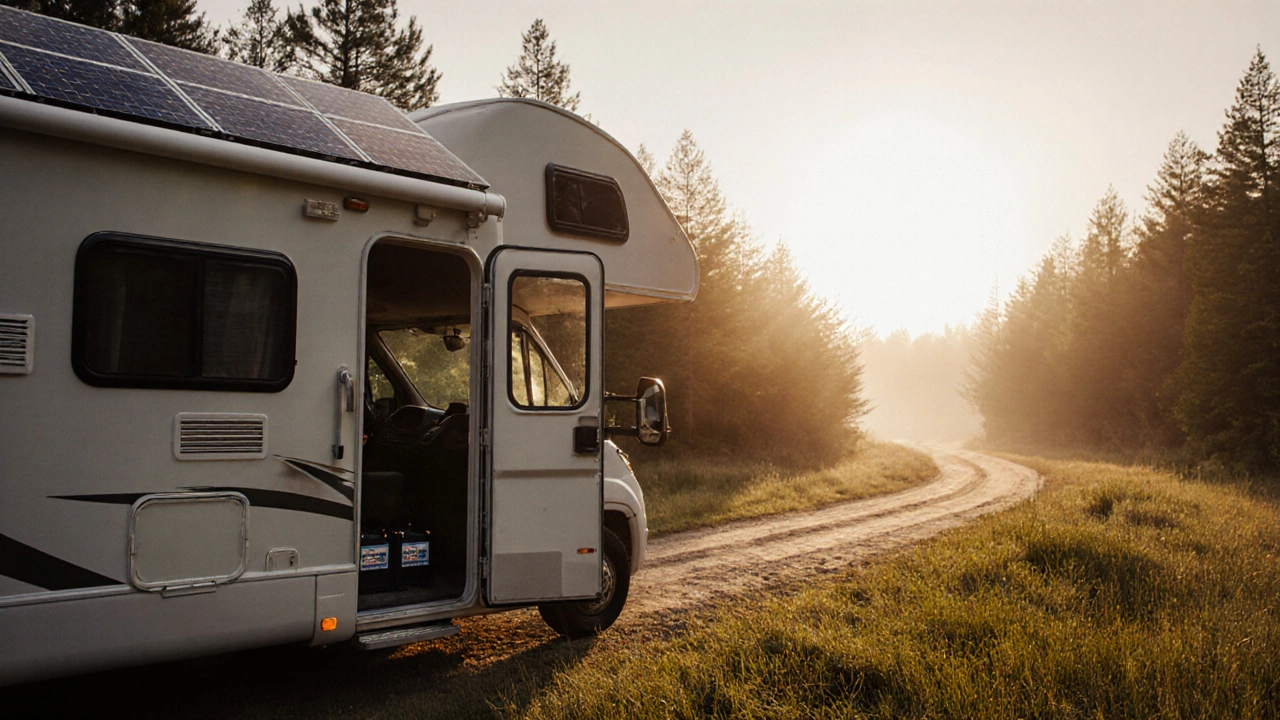
When planning a motorhome adventure, Off-Grid Power, the ability to generate and store electricity without relying on a fixed grid connection. Also known as off‑grid electricity, it lets you cook, charge devices and run lights wherever you park.
One of the most popular ways to stay charged is with a portable power station, a compact battery pack that can supply 12‑240 V output for short‑term use. These units usually house lithium‑ion cells, offer multiple USB and AC ports, and can run for several hours on a single charge. Off‑grid power encompasses portable power stations, meaning they are a core component of any self‑contained energy setup.
Another cornerstone is the solar generator, a panel‑plus‑battery system that harvests sunlight and stores it for later use. Solar generators require sunlight to charge, but once the batteries are full they can power a motorhome for days without fuel. This technology requires an open sky, making it ideal for rural campsites and long‑term boondocking. Off‑grid power therefore requires solar generators as a renewable source, establishing a clear link between sunlight and mobile electricity.
Inside a motorhome, the RV battery, the deep‑cycle battery that powers the vehicle’s lights, pump and appliances when the engine is off, is the heart of the system. Modern RV batteries are often lithium‑based, offering higher capacity and lighter weight than traditional lead‑acid units. When paired with a portable power station or solar generator, the RV battery balances load and stores excess energy, creating a resilient off‑grid network.
Without reliable off‑grid power, you’re forced to stay near campgrounds with hookups, limiting the freedom that motorhome travel promises. Portable power stations give you instant power for a night of cooking or a quick phone charge, while solar generators extend that freedom for days. The RV battery acts as a buffer, smoothing spikes when you run the kettle or the fridge. In practice, the three entities work together: solar generators charge the RV battery, the battery feeds the motorhome, and the portable power station handles peak loads.
Cost is another practical angle. A decent portable power station runs between £300‑£800, a solar kit for a motorhome can cost £500‑£1,500, and upgrading to a lithium RV battery may be £1,000‑£2,000. While the upfront spend sounds high, the savings on fuel, campsite fees and generator rentals add up quickly. Real‑world users report cutting campsite electricity costs by up to 70% after switching to an off‑grid setup.
Safety cannot be overlooked. Traditional gas generators produce carbon monoxide and noise, whereas solar and battery‑based solutions run silently and emit no fumes. Properly sized RV batteries also reduce the risk of deep discharge, which can damage the battery and leave you stranded. For families traveling with kids, a quiet, clean power source is a huge peace‑of‑mind boost.
Planning your off‑grid power system starts with assessing your energy needs. List every device you’ll use, note its wattage, and calculate total daily consumption. Match that number against the capacity of a portable power station, the output of a solar generator, and the amp‑hour rating of your RV battery. This approach ensures you choose components that work together without over‑ or under‑specifying.
Once you’ve built your kit, maintenance is straightforward: keep solar panels clean, check battery terminals for corrosion, and store portable power stations in a cool, dry place when not in use. Regular checks keep the system reliable and extend its lifespan, so you can enjoy hassle‑free trips year after year.
Below you’ll find a curated collection of articles that dive deeper into each piece of the puzzle—pricing guides, safety checklists, real‑world cost breakdowns and tips for maximizing your energy independence on the road.